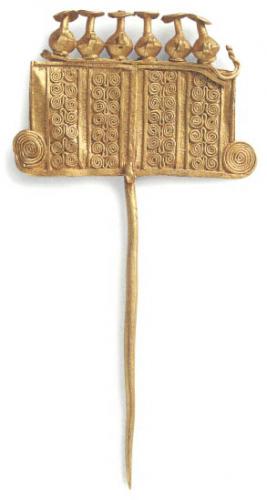Fabergé was given complete creative freedom in creating the eggs. The only stipulations were that each egg must be unique and must contain a surprise. The eggs were made with precious metals or hard stones decorated with combinations of enamel and gem stones. The term “Fabergé egg” has become a symbol of luxury and the eggs are regarded as masterpieces of the jeweler's art. Of the 50 made, 42 have survived.
 | ||||||
| Faberge Gold and Diamond Coronation Egg 1897 |













